I have a 3D scatter plot which, on one of its planes, plots 2 points for each date. I've asked about how to draw a LINE between every pair of points, and received an answer for which I'm thankful. What I want now is to draw a BAR or a RECTANGLE to connect the points instead of just a line.
Here's what the plot looks like at the moment, but I want it to look a bit like the plot from the 3D bar demo from matplolib's docs except with the bars "floating" instead of anchored to the axis.
I've tried using Axes3D.bar (as explained on the matplotlib page) but it expects me to supply a "height" for each bar instead of two actual coordinates, and that height will be anchored to the axis.
This is the code, and any help is appreciated.
import matplotlib.pyplot
from mpl_toolkits.mplot3d import Axes3D
dates = [20020514, 20020515, 20020516, 20020517, 20020520]
highs = [1135, 1158, 1152, 1158, 1163]
lows = [1257, 1253, 1259, 1264, 1252]
upperLimits = [1125.0, 1125.0, 1093.75, 1125.0, 1125.0]
lowerLimits = [1250.0, 1250.0, 1156.25, 1250.0, 1250.0]
zaxisvalues0= [0, 0, 0, 0, 0]
zaxisvalues1= [1, 1, 1, 1, 1]
zaxisvalues2= [2, 2, 2, 2, 2]
fig = matplotlib.pyplot.figure()
ax = fig.add_subplot(111, projection = '3d')
ax.plot(dates, zaxisvalues1, lowerLimits, color = 'b')
ax.plot(dates, zaxisvalues2, upperLimits, color = 'r')
for i,j,k,h in zip(dates,zaxisvalues0,lows,highs):
ax.plot([i,i],[j,j],[k,h],color = 'g')
ax.scatter(dates, zaxisvalues0, highs, color = 'g', marker = "o")
ax.scatter(dates, zaxisvalues0, lows, color = 'y', marker = "^")
matplotlib.pyplot.show()

